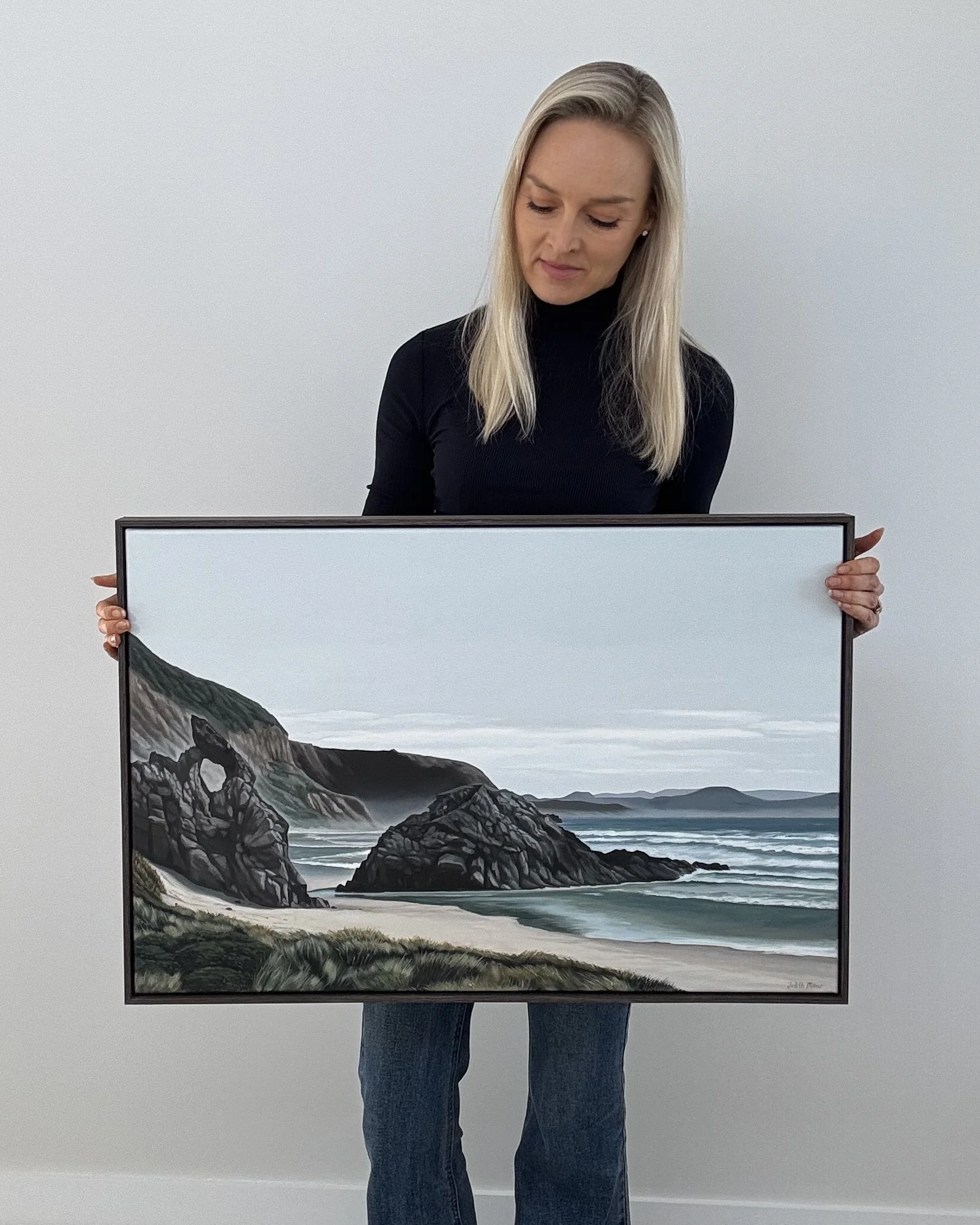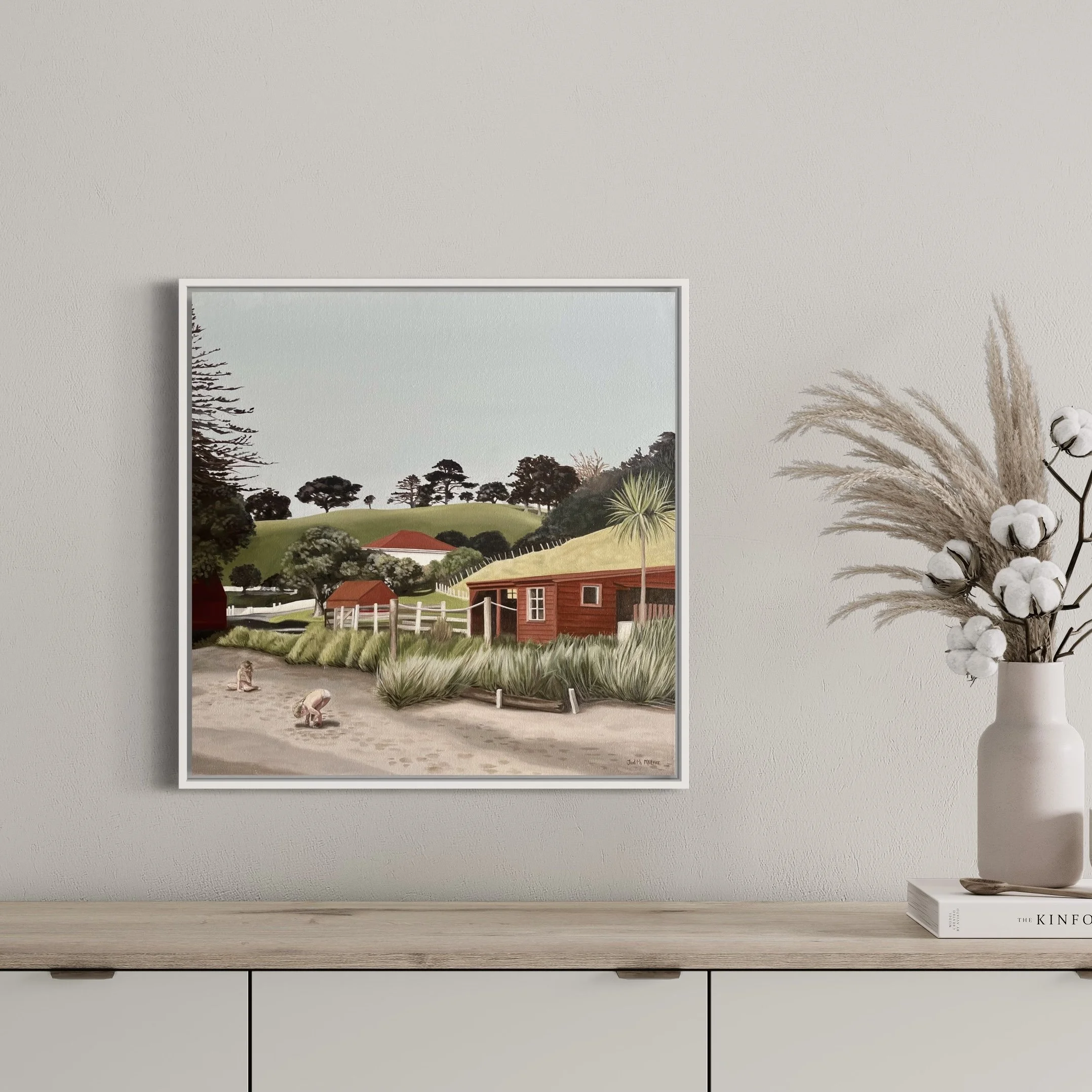When framing prints, my go to is a low profile white coated wood moulding with a smooth matte finish. It’s classic, timeless and complements the soft colour palette of my paintings. It will also work with almost any room.
Timber frames can also look great, especially if they pick up on a colour in the painting. You’ll want to make sure that the tone of the timber is similar to the tones in the painting though, a warm golden timber will clash with a cool colour palette and vice versa.
I always have my prints framed with an acid free mat that is wider than the frame. I like the margin of the mat to be slightly wider at the bottom to anchor the piece and give a more bespoke look than you get with a ready made frame. For my A2 prints the margins are 45mm top and sides and 75mm at the bottom which allows the print to breathe.
Another, less common, option for prints is to float them on top of the matboard using hidden spacers to hold the work slightly raised above the backing. There is a gap between the print and the glass. Because the print sits slightly above the matboard, a shadow is created which adds dimensionality to the artwork. It’s a more expensive option than the classic overmat method but it can add a point of difference and really customise a large, statement piece.
I’m happy to arrange framing of my prints for Auckland customers who are able to collect them but don’t have this as an option in my online store because I prefer not to send work that’s framed behind glass in the post. But if you’re local and would like me to frame your print, just send me an email to arrange it.
Paintings on Canvas
Oil paintings are not traditionally framed behind glass. All my originals are varnished which protects them by preventing dirt from reaching the surface of the paint and damaging it.























